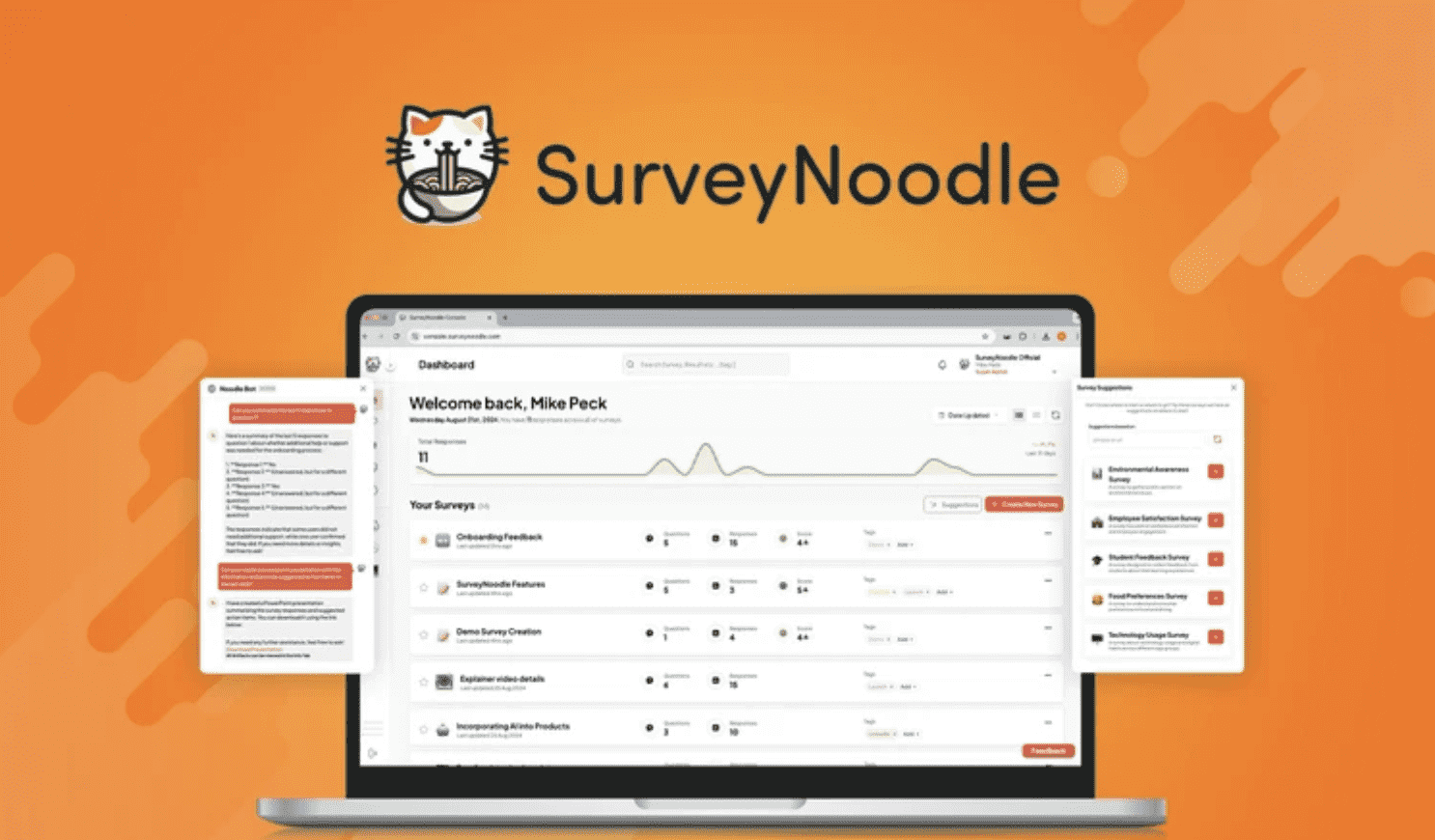Are you a business owner looking to take the next step up? Do you want to scale up your operations and target higher-end customers? If so, then this blog post is for you! Learn more about what it means to move upmarket and how you can do it successfully.
What Is SMB SaaS?
Small and medium-sized business (SMB) SaaS is a type of software-as-a-service (SaaS) that is designed to help businesses of all sizes, from small startups to large enterprises, run their operations more efficiently. The main focus is on providing powerful tools, such as customer relationship management (CRM) software, analytics, and other applications, that can be accessed through the cloud.
This type of software is designed to be cost-effective, allowing businesses to scale quickly without having to invest in large upfront costs or ongoing maintenance. SMB SaaS solutions have become increasingly popular due to their ability to help businesses reduce costs and increase efficiency.
- SaaS (software as a service) is a delivery model for software that allows customers to access the software from anywhere, at any time.
- With SaaS, companies can offer their services on a budget, without the hassle of maintaining servers or building out IT infrastructure. This allows businesses to scale rapidly and easily.
- SaaS platforms provide businesses with an easy way to generate recurring revenue through sales of subscriptions and fees.
- As a customer, you receive reliable access to the features and functionality of a software product without the need for costly upfront investments.
- There are many different types of SaaS platforms, so it’s important to choose the right one for your business.
Moving Upmarket In SaaS
Moving upmarket in SaaS is a strategy that involves acquiring enterprise customers, allowing for larger deals and greater revenue. It requires a shift in product focus, marketing tactics, and pricing. It also means understanding who your target market is and what they are looking for in terms of value.
You will need to invest heavily in product development and marketing, as well as customer support to stand out from the competition. Additionally, you should consider partnering with other companies to expand your reach and tap into their networks. Finally, adjusting your pricing strategy can be key to success when moving upmarket.
Know Your Competitors and Differentiators
Before you move upmarket, it’s essential to understand your competitors and differentiate yourself from them. Take some time to research the products and services your competitors offer, as well as the pricing models they use.
This will help you identify where your product stands in the market and determine how you can stand out from the competition. Additionally, take a look at what features and services your competitors are offering that you don’t.
This may lead you to identify opportunities to develop new features or services that will help you stand out from the competition when you move upmarket.

How To Move Upmarket
Moving upmarket is an exciting and rewarding journey, but it is also a complex process that requires careful planning and execution. There are a variety of strategies that you can use to make the transition as successful as possible.
Here are some tips to help you get started:
Know your target market: Understand who your target customers are and what they need from your product or service. This can help you develop an effective marketing and sales strategy that will appeal to the right audience.
Develop your product: Make sure that your product or service meets the needs of your target market. Make sure it is robust, reliable, and easy to use.
Double down on marketing and sales: Focus on building relationships with potential customers. Invest in digital marketing and sales tactics such as content marketing, email campaigns, social media, and more.
Improve customer support: Make sure that you have an effective customer support team in place to assist customers with any issues they may have.
Find potential partners: Find companies that offer complementary services or products that can help you move upmarket. This can be a great way to expand your customer base.
Adjust your pricing strategy: Consider pricing strategies such as tiered pricing or value-based pricing to ensure that you are offering competitive prices while still making a profit.
1. Know Your Target Market
Once you’ve identified and researched your potential upmarket customers, it’s time to start developing a strategy to move upmarket. The first step is to get to know your target market. Take the time to understand what drives them, what their needs and pain points are, and how you can better serve them.
Knowing your target market will help you develop a product that meets their needs and will be more attractive to them. It will also help you craft a more effective marketing message and pricing strategy that resonates with your target market.
2. Develop Your Product
Once you’ve identified your target market and their needs, it’s time to develop your product. It’s critical to ensure that your product meets the needs of higher-end customers. You should focus on creating a product that has more features and capabilities than the ones offered by competitors.
You should also consider how you can best position yourself in the market and differentiate yourself from other players. This can include investing in research and development to ensure that your product is the best in its class.
Additionally, you should prioritize customer feedback and use it to improve your product. With a well-crafted product and a clear understanding of your target market, you’ll be ready to move upmarket and start selling to bigger customers.
3. Double Down On Marketing & Sales
When you’re ready to move upmarket, it’s important to double down on your marketing and sales efforts. It’s essential to reach out to potential customers and build relationships. You need to understand their needs and objectives, and then develop a plan for how to address them. Invest in marketing automation tools and strategies to ensure that you’re consistently reaching out to potential customers.
Additionally, focus on building relationships with thought leaders in the industry, as they can help you to get your message out further. Finally, invest in sales enablement tools to help your team close deals faster. With the right strategy, you can successfully move upmarket and reach new heights.
4. Improve Customer Support
Moving upmarket can be a daunting task, but it can also be incredibly rewarding. One of the keys to success is providing excellent customer support. Make sure you have a team of knowledgeable and helpful customer support reps in place who can handle more complex issues and help customers with their inquiries.
Invest in training and resources for your customer support team to ensure they have the knowledge and tools they need to help customers quickly and effectively. This will ensure that your customers are satisfied with the level of service they receive, which will help you to build trust and loyalty with them.
5. Find Potential Partners
Once you have identified your target market and have developed your product, the next step is to find potential partners. Having strategic partnerships with the right companies can open up a whole new range of opportunities. These partners can provide access to new customers and resources that you may not have had access to before.
If you are looking to move upmarket, finding the right partners can be a great way to do it. Look for companies that are already established in the space and have a solid customer base. Reach out to them, offer them something of value, and forge a mutually beneficial relationship. As you build these relationships, you will be able to expand your network and find more opportunities to move upmarket.
Adjust Your Pricing Strategy
Once you have identified your target market and their needs, it is important to adjust your pricing strategy accordingly. By understanding the requirements of the enterprise market, you can tailor your pricing models to better suit the needs of these customers. This may include introducing volume discounts or offering discounts on annual contracts.
You should also consider creating different pricing tiers based on the customer’s size and use of your product. By adjusting your pricing strategy, you can ensure that you are offering an attractive and competitive solution to potential enterprise customers.
3 lessons learned from moving upmarket
Moving upmarket can be a daunting task for any SaaS business, but it can also be incredibly rewarding. To ensure success, it’s important to learn from the experiences of others. Here, we’ll look at three lessons learned from our own experience moving upmarket.
Lesson #1: Identify the needs of your target market
One of the most important lessons for any company looking to move upmarket is to identify the needs of its target market. Understanding who your potential customers are, what drives them and what their needs are, is essential to develop a product that meets those needs.
Companies should also assess the competition and how their product differentiates from others in the market. With this knowledge, you can develop a product that is superior to your competitors and will appeal to your target market.
Lesson #2: Invest in marketing and product development
It’s important to invest in your marketing and product development when moving upmarket. You need to create a robust marketing strategy that focuses on building relationships with enterprise-level customers. Additionally, you must ensure that your product meets the needs of your new target market.
This may involve making changes to your product or creating new features specifically for enterprise customers. You should also consider offering a free trial or demo of your product so that potential customers can try it out before committing to a purchase.
Finally, you should create a customer support system that provides quick and helpful responses to any questions or issues that may arise from using your product.
Lesson #3: Focus on customer experience
The third and final lesson we’ve learned from our journey of moving upmarket is to focus on customer experience. It’s essential to ensure that customers have a great experience when using your product. Investing in customer service, support and training are key to ensuring that your customers are satisfied and keep coming back for more.
As you move upmarket, the expectations of your customers also increase. It’s important to remember that providing a good customer experience is essential for long-term success and growth.
FAQ
How does a SaaS company move upmarket?
There are a few key strategies that a SaaS company can use to move upmarket. These may include expanding into new markets, increasing the number of customers served, and developing innovative products or services. Additionally, a SaaS company may focus on marketing its product in ways that are unique and appeal to potential buyers.
To expand into new markets, a SaaS company might invest in marketing efforts that target specific demographic groups or industries. This could involve spending money on search engine Advertising (SEA), conducting market research so as to create targeted content, or partnering with other companies who specialize in outreach to certain customer segments.
What does upmarket mean in sales?
Upmarket means high-end, luxury, or expensive. It is often used in reference to sales techniques and marketing campaigns that are aimed at customers who have a higher budget. For example, upmarket products may be advertised as being of greater quality than those that are lower in price. In addition, upmarket retailers might use more luxurious packaging or exclusive promotions to attract buyers who want goods that correspond with their lifestyle and sense of fashion.
Upbranding is another term for upmarketing; it refers to the process of making a product or service seem more upscale by using different branding elements (such as an elevated logo design) and marketing strategies (such as creating social media accounts specifically designed for upscale consumers). By adopting these tactics, businesses can help their products stand out from competitors’ offerings and garner increased customer loyalty.
What is an upmarket business?
Upmarket businesses are those that offer a higher level of quality and service than the average business. They combine stylish branding with high-quality products and services, often targeting affluent consumers. Upmarket businesses may be found in all areas of the economy, but they are especially common in luxury goods and services industries such as fashion, beauty, food delivery, home cleaning, etc.
Upmarket businesses often charge more for their products or services than typical businesses do, which helps to justify their expensive prices. In fact, upmarket brands receive an estimated 30% premium over the market price for comparable items due to customer differentiation (e.g., exclusivity).
Furthermore, upmarket customers tend to be loyal because they perceive value in what these companies have to offer. This makes it difficult for other firms to enter into this segment without first establishing themselves as leaders within their niche marketplaces by offering superior quality at fair pricing points.
What is an upmarket customer?
Upmarket customers are those who have a higher income and spend more money on luxury items and services. This group tends to be affluent, educated, and knowledgeable about the latest trends.
They are also likely to demand high-quality products and services from their businesses. As a business owner, it is important to understand your upmarket customer segment in order to cater directly to their needs.
For example, you may want to create unique or exclusive content that is only available through email subscriptions or special offers that are only available during promotional periods. You can also offer discounts or preferential treatment for loyal customers who meet specific criteria (such as spending a certain amount of money within a given period).
By doing this, you will attract new upmarket customers while satisfying the needs of current ones – making your business thrive in an increasingly competitive market!
Conclusion
Moving upmarket can be a great way to scale your SaaS business and unlock new opportunities. While it may involve additional costs and resources, the potential long-term rewards of growing your enterprise customer base far outweigh any short-term challenges.
Understanding your target market and product value, doubling down on marketing & sales, improving customer support, finding potential partners, and adjusting your pricing strategy accordingly, can all help you move upmarket successfully.
Through the lessons we have learned from our own experience, we have seen that by focusing on customer experience, investing in marketing & product development, and identifying the needs of your target market, you can move upmarket successfully.







![SaaS Lifetime Deals: Which Platform & Are They Worth the Investment [In 2025]? AppSumo Saas Lifetime deals](https://eebfoenrqrf.exactdn.com/wp-content/uploads/2023/08/AppSumo-Saas-Lifetime-deals-450x261.png?lossy=1&ssl=1)

![Best SaaS Sales | Everything You Need to Know in 2025 Best SaaS Sales in [current_year].](https://eebfoenrqrf.exactdn.com/wp-content/uploads/2022/12/SAAS-SALES-450x253.png?lossy=1&ssl=1)